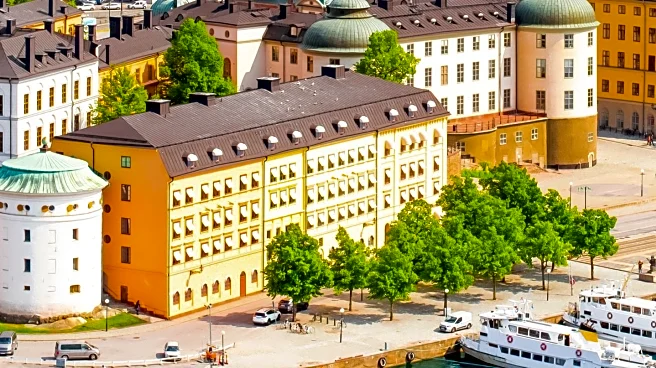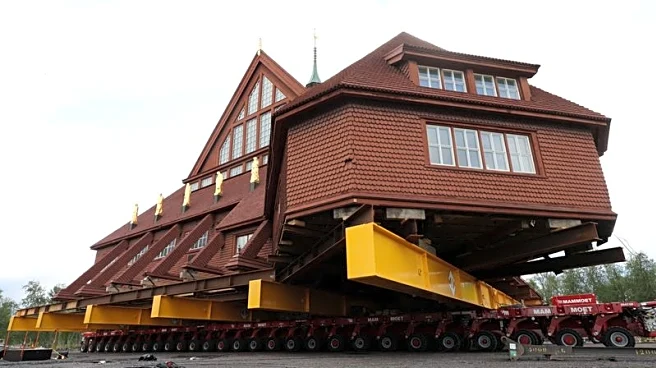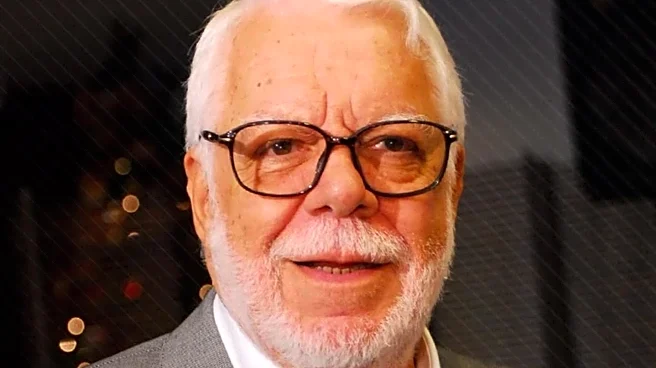What's Happening?
In Kiruna, Sweden, a significant engineering feat is underway as the town relocates its beloved wooden church, Kiruna Kyrka, due to the expansion of the world's largest underground iron-ore mine. The church, a gift from the state-owned mining company LKAB, is being moved 5 kilometers east to a new city center to prevent it from being swallowed by the mine. The relocation involves widening roads and dismantling infrastructure to accommodate the church's size and weight. The move has attracted thousands of visitors, including Swedish King Carl XVI Gustaf, and features musical performances, including Sweden's Eurovision entry. The relocation is part of a broader effort to move Kiruna's town center, which has been ongoing since 2004 due to the mine's expansion causing structural damage.
Why It's Important?
The relocation of Kiruna Kyrka highlights the intersection of cultural preservation and industrial expansion. The church, voted Sweden's best building of all time built before 1950, is a significant cultural landmark. Its move underscores the challenges faced by communities near large-scale industrial operations, where economic benefits must be balanced with cultural and environmental impacts. The relocation also raises concerns among the Sami Indigenous people, whose reindeer herding routes may be affected by the mine's expansion. This event illustrates the broader implications of industrial activities on local communities and cultural heritage, emphasizing the need for careful planning and consideration of diverse stakeholder interests.
What's Next?
The church's relocation is expected to conclude with its reopening at the new site by the end of 2026. The ongoing relocation of Kiruna's town center will continue as the mine expands. Stakeholders, including the Sami community, may engage in discussions with LKAB to address concerns about the impact on reindeer migration routes. The event may prompt further examination of how industrial projects can coexist with cultural preservation and environmental sustainability. The spectacle of the church's move, broadcasted by Sweden's national broadcaster, may also influence public perception and policy discussions regarding industrial expansion and community impact.
Beyond the Headlines
The relocation of Kiruna Kyrka serves as a case study in balancing industrial progress with cultural and environmental considerations. It highlights the ethical dimensions of preserving cultural heritage while accommodating economic development. The event may inspire similar initiatives globally, where communities face the challenge of maintaining cultural landmarks amidst industrial growth. The involvement of the Sami community underscores the importance of including Indigenous perspectives in decision-making processes, potentially influencing future policies on industrial expansion and cultural preservation.













